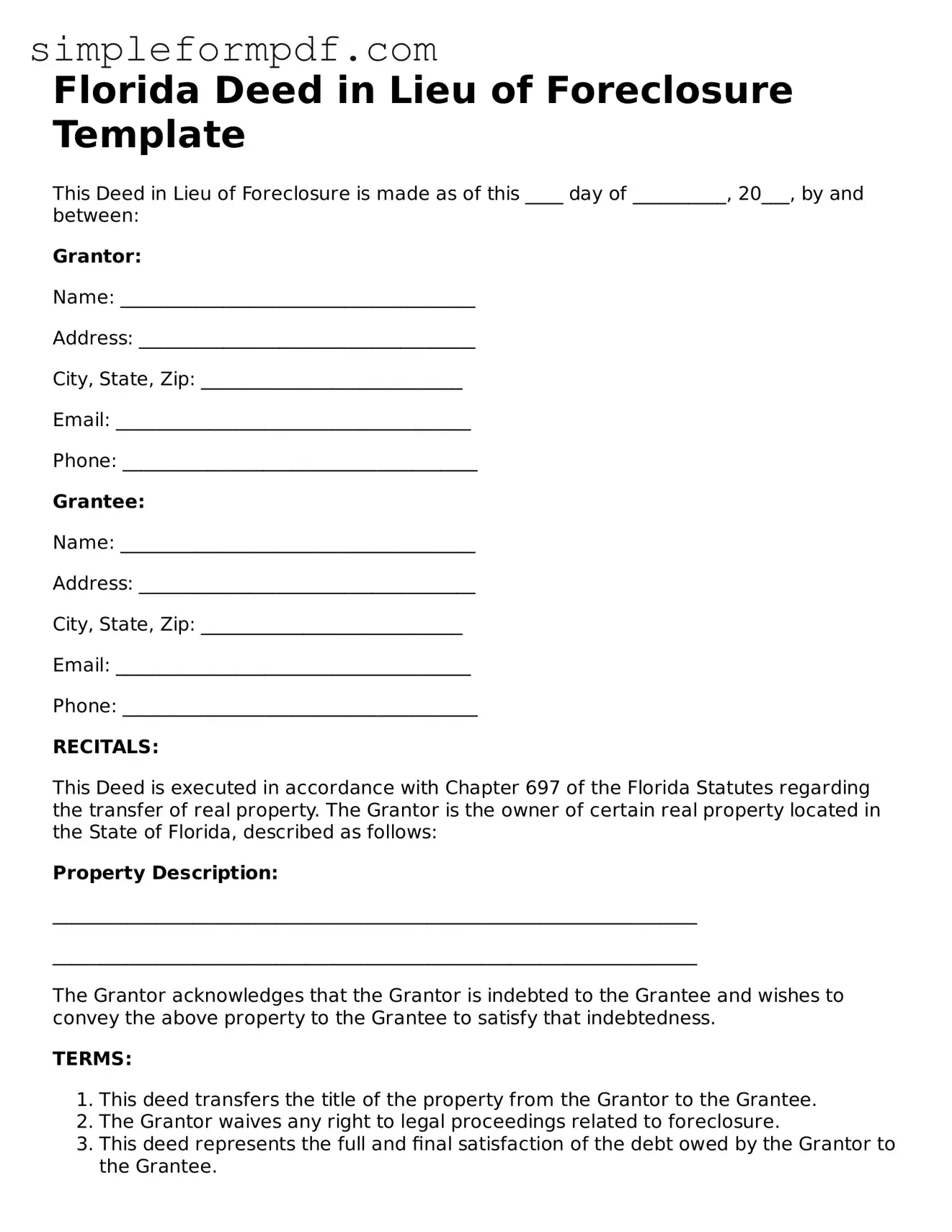Florida Deed in Lieu of Foreclosure Template
This Deed in Lieu of Foreclosure is made as of this ____ day of __________, 20___, by and between:
Grantor:
Name: ______________________________________
Address: ____________________________________
City, State, Zip: ____________________________
Email: ______________________________________
Phone: ______________________________________
Grantee:
Name: ______________________________________
Address: ____________________________________
City, State, Zip: ____________________________
Email: ______________________________________
Phone: ______________________________________
RECITALS:
This Deed is executed in accordance with Chapter 697 of the Florida Statutes regarding the transfer of real property. The Grantor is the owner of certain real property located in the State of Florida, described as follows:
Property Description:
_____________________________________________________________________
_____________________________________________________________________
The Grantor acknowledges that the Grantor is indebted to the Grantee and wishes to convey the above property to the Grantee to satisfy that indebtedness.
TERMS:
- This deed transfers the title of the property from the Grantor to the Grantee.
- The Grantor waives any right to legal proceedings related to foreclosure.
- This deed represents the full and final satisfaction of the debt owed by the Grantor to the Grantee.
- This instrument shall be recorded in the public records of the county where the property is located.
IN WITNESS WHEREOF: the parties have executed this Deed as of the date first above written.
GRANTOR:
Signature: ________________________________________
Name: _____________________________________________
GRANTEE:
Signature: ________________________________________
Name: _____________________________________________
NOTARY ACKNOWLEDGMENT:
State of Florida
County of ____________________
On this ____ day of __________, 20___, before me, a Notary Public, personally appeared ___________________ (Grantor), known to me (or proven to me on the basis of satisfactory evidence) to be the person(s) whose name(s) is/are subscribed to this instrument and acknowledged to me that he/she/they executed it.
Notary Public Signature: ____________________________
My Commission Expires: ___________________________
Submitted for Recording:
County Clerk: ___________________________________
